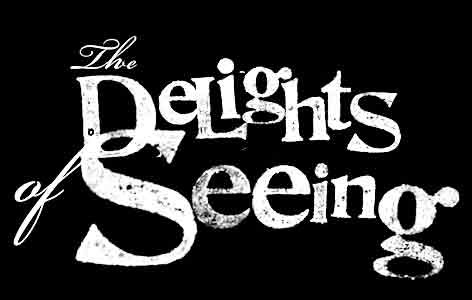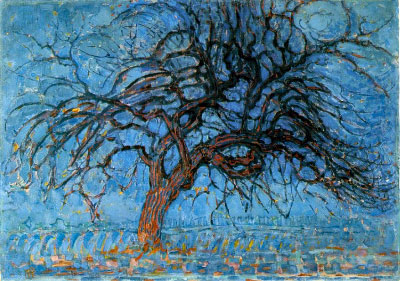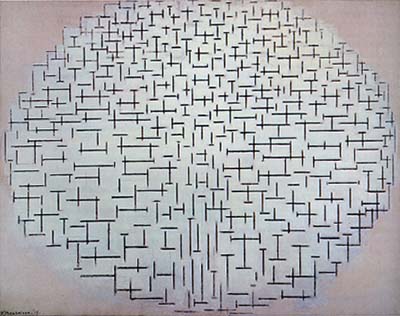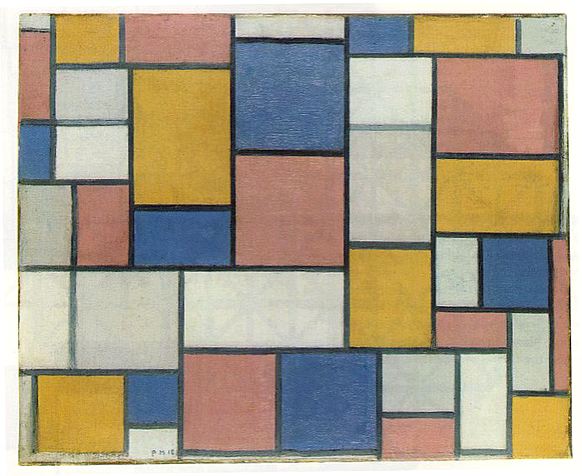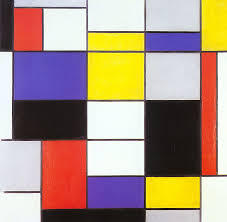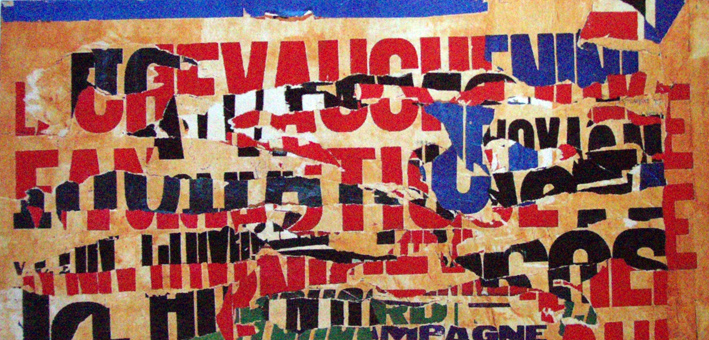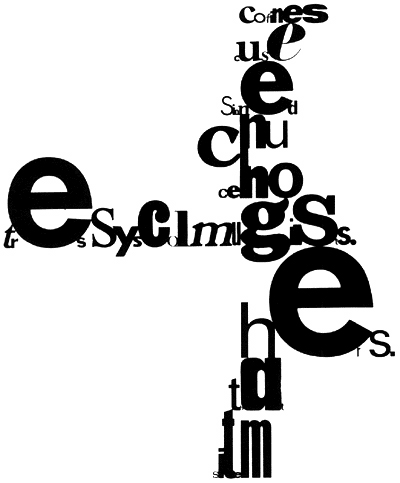Morris Louis 'Where' 1960
All art is Abstract. It is a sign to something else - a story, a landscape, an event, an idea. Whether the art is two dimensional, sculptural or conceptual it relies on us to use abstract thought to understand it. By the same rule all Art, on some level, is conceptual. An Idea lies behind an Art Work.
Abstract Art can be inspired by things from the real world that are then stylised and simplified (Celtic Art, Art Nouveau). Abstract Art can be Pure Abstraction - only referring to itself and not objects from the real world (Islamic Art, Suprematism, Wassily Kandinsky, Abstract Expressionism)
'We should remember that a picture, before being a war horse, a nude women, or telling some other story, is essentially a flat surface covered with colours arranged in a particular pattern'
Maurice Denis 1890
Sehzade Mosque Istanbul, Turkey - Mimar Sinan 1548
All art is Abstract and Abstract values can be seen in Art that we would not consider to be connected to Abstraction.
Giovanni Bellini - 'Madonna of the Meadow' c1500
The art Critic Matthew Collings has discussed the use of geometric abstract compositions in Renaissance art and modernist abstract art. In this painting Bellini uses geometry to create his composition. He has used a number of triangles to build up the composition.
The Madonna is a large triangle taking up the whole composition.
Within that triangle there are three smaller triangles.
Kazimir Malevich 'Suprematism with Blue Triangle and Black Square' 1915
Malevich's Supremacist painting seemed revolutionary at the time - and it was. It seems to have nothing to do with the past and is a truly new type of art. However, the modernists were very interested in the art of the pasts use of geometry.
"It is the olds use of pure geometry that the new is very interested in."-
"a visual tradition for future artist to draw on"
Collings
Figurative art is held together by abstract values and abstract art uses traditional ideas.
Paul Cezanne 'Still life with plaster cupid' 1895
Humans have always stylised and abstracted images. However, Western Art has been dominated by figurative Art and the pursuit of realism. Modernism moved away from the figurative and the 20th Century was dominated by abstraction and questioning what Art is and what it could be.
There are numerous reasons for this transition but there are two key influences. The first reason is connected to the invention of photography and its influence on the way Artists created images (read here for an in-depth look at Photography's influence on Modern Art). The second reason (which is connected to the first) is Picasso's Cubists paintings (influenced by Cezanne) and the influence these approaches had on Modern Art (read here for a study of Cubism).
The Modernist Artists of the 20th Century continued to push the limits of Art.
Henri Matisse left to right 'The Back I' 1908-1909, 'The Back II' 1913, 'The Back III' 1916, 'The Back IV' 1931 Bronze
"I sculpted as a painter, I did not sculpt like a sculptor. Sculpture does not say what painting says."
For over 20 years Henri Matisse, primarily known as a painter, returned to the same subject of a female back. However, each time the form was simplified. Even though the figure is made from Bronze Matisse is still working like a Painter. The work is more of a relief than a sculpture - with the figure emerging from the rock. In the first sculpture, from 1908/09, we can see the curves and contours of the figure and we get the sense of a physical human form in front of us. Five years later we can still see the figure clearly but the curved lines are becoming more straight and harsh. There is a more dramatic shift when Matisse approaches the sculpture for a third time. The spine, a subtle line on his initial sculpture, becomes a bold central line that holds the figure together. It has been combined with the head and hair from the original form to become a dominating presence. By the final sculpture the form has been reduced to almost an abstract state while retaining a quality of a child's drawing. In fact it the last sculpture has the same qualities as Matisse's late work - his Cut Outs.
The Modernist painter Piet Mondrian broke painting down into its basic components - vertical lines, horizontal lines, black, white and the primary colours. His mature paintings are full of Golden Rectangles and they have no reference to the world - the natural conclusion to this is a pure white painting.
1908
1913
1918
1923
However, Mondrian's development to this high modernist style did start with paintings of actual things from the real world. When Mondrain saw the work of the Cubist's in Paris 1911 he style began to change.
Trees were a continuous theme in Mondrian's work between 1900 to 1914. He initially began with landscapes but gradually focused on single trees. The branches became solid lines that divided the empty space (sky). The images became more abstract with simplified planes, lines and colours. The tree becomes an almost skeleton for the paintings that helped organise the space within the composition.
Theo van Doesburg's studies for his Great Pastoral Scene and his colour draft for the Small Pastoral scene in Drachten shows the artists process of abstraction. The changing figure of The Sower shows, step by step, van Doesburg's process of rendering the figure into geometric shapes. The figure was based on van Gogh's famous painting 'The Sower', itself based on a painting by Millet. The initial sketches show van Doesburg stylising the figure and gradually decomposing it into individual planes. He uses triangles and rectangles to structure his design.
Theo van Doesburg 'Aesthetically Transformed Subject' 1917
Theo van Doesburg, the founder of De Stijl, also simplified images into stylised abstracted compositions.
Vincent van Gogh 'The Sower' (after Millet) 1889
Theo van Doesburg - Study for The Sower
Theo van Doesburg Stained Glass Window in Drachten
photographic equivalent - nagy, man ray
Pure Abstraction
